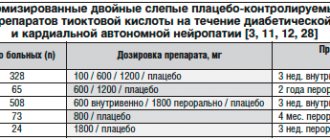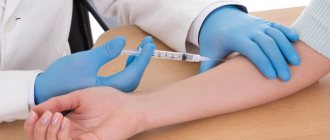In this article we will tell you:
- What is an eating disorder
- Causes of eating disorders
- Classification of eating disorders
- How to recognize an eating disorder
- Eating disorders in children and adolescents
- Treatment of eating disorders
Eating behavior
- this is a person’s attitude towards food intake, a complex of unconditioned reflexes and conscious decisions that determines the amount and composition of what is eaten in various conditions. Ideally, the body should receive all the necessary nutrients and the optimal amount of calories, and the person himself should enjoy food.
But often a person’s eating behavior differs from the norm, which has a serious impact on health and quality of life. What is considered normal, how to distinguish the type of eating disorder, what are the causes of disorders and how to cure this condition?
What is RPP?
Eating disorder is a behavioral condition characterized by persistent eating disorders and associated anxiety. We need to understand that this is really a disease, it has a code in the International Classification of Diseases - f50. This disease can greatly affect the quality of life, it affects both the physical and psychological state, and a person experiences social maladjustment.
Diagnostics, diagnosis, choice of treatment regimen, and involvement of related specialists fall within the scope of a psychotherapist. He can involve related specialists - a clinical psychologist, nutritionist and other doctors in order to help and correct the condition.
Diagnosis and treatment are based on the American Psychiatric Association's Diagnostic and Statistical Manual of Mental Disorders (DSM-5). The DSM-4 included more stringent criteria for classifying disorders. This guide is based on the symptoms that certain conditions may give us.
Eating disorders
Eating disorders (EDs) are a group of severe psychological illnesses characterized by abnormal eating habits and disturbances in body image and weight; with men more often concerned about muscle mass, and women more often concerned about weight loss. All eating disorders have a strong impact on a person’s health and psychosocial capabilities. The Diagnostic and Statistical Manual [DSM-5] and ICD-11 identify six major eating disorders. These include the three most well-known: anorexia nervosa, bulimia nervosa, binge eating disorder, and in addition three other diseases that were previously considered as childhood disorders: avoidant and restrictive eating disorders, rumination disorder and pica.
Anorexia nervosa is characterized by a relentless desire to be thin, a morbid fear of obesity, a distorted body image, and a restriction of food intake relative to the accepted norm. This disorder may involve gastrointestinal cleansing (eg, self-induced vomiting) and increased physical activity. Moreover, all of these factors lead to very low weight: to such an extent that health is harmed, changes occur in almost all organs and systems of the human body. In addition, with anorexia nervosa, the patient often suffers from cognitive and emotional disturbances. It is concerns about body shape and weight that distinguish anorexia nervosa from eating disorders of the avoidant and restrictive type.
Bulimia nervosa is characterized by recurrent episodes of binge eating followed by inappropriate compensatory behavior, such as purging (provoking vomiting, abuse of laxatives and diuretics), fasting, or exercise. This behavior is associated with negative perceptions of one's appearance, shape and weight. Bulimia nervosa can affect people with both normal and increased body weight (if the BMI is below normal, then the diagnosis of anorexia nervosa with compensatory purging after overeating is made).
Binge eating disorder is a condition characterized by recurrent episodes of overeating, which is accompanied by less compensatory manifestations than in bulimia nervosa. Both binge eating disorder and bulimia nervosa are often associated with or lead to obesity (30–45%) and related metabolic diseases.
Avoidant and restrictive eating disorders include the following symptoms: avoidance or restriction of food intake (this refers to the amount and/or variety of food consumed), resulting in significant weight loss, nutritional deficiencies, dependence on nutritional support and/or significant impairment of psychosocial functioning. Symptoms may be due to lack of interest in food or extreme food selectivity based on sensory sensitivity, or fear of negative consequences from eating food, such as vomiting or choking. But unlike anorexia nervosa and bulimia nervosa, this disorder does not involve concerns about body shape or weight.
Pica is the consumption of non-nutritive or non-nutritive substances for a month or more. Triggers for this condition include the taste of a substance, curiosity, or psychological stress.
Rumination disorder is the repeated regurgitation of food after eating in the absence of nausea, food aversion, or involuntary vomiting.
The diagnosis of anorexia nervosa is usually quite obvious from the patient's condition, especially if the patient's loved ones confirm this information. However, it happens that inflammatory bowel diseases (Crohn's disease and ulcerative colitis), neoplasms, thyrotoxicosis and diabetes mellitus are mistaken for anorexia nervosa. In addition, this diagnosis is difficult for people with severe depression, since depression can be associated with severe weight loss due to lack of appetite, and schizophrenia, in which a person may go hungry for fear of being poisoned.
Signs of anorexia nervosa when examining patients (Fig. 1).
Figure 1 | The effect of anorexia nervosa on the body
All body systems are damaged as a result of constant hunger, and the changes intensify over time. In addition, if anorexia nervosa is characterized by compensatory behavior in the form of gastrointestinal cleansing, the risk of developing the following conditions increases:
- cardiovascular system: hypotension, bradycardia, prolonged QT, arrhythmias, cardiomyopathies;
- integument system: dry scaly skin, hair loss, thin body hair;
- endocrine system and metabolism: hypoglycemia, hypokalemia, hyponatremia, hypothermia, hypothyroidism, hypocortisolemia, amenorrhea, delayed puberty, growth retardation, osteoporosis;
- Gastrointestinal tract: prolongation of transit time (slower evacuation of chyme from the stomach, impaired motility of the antrum of the stomach, gastric atrophy, weakened intestinal motility), constipation;
- blood system: anemia, leukopenia, thrombocytopenia;
- nervous system: peripheral neuropathies, decrease in brain volume (increase in the size of the ventricles, widening of the sulci, cerebral atrophy (actually pseudoatrophy, this is how it is corrected with weight gain);
- oral cavity: caries;
- skeleton: osteopenia;
- kidneys: nephrolithiasis, acute renal failure;
- liver: increased transaminase levels, liver failure;
- reproductive system: amenorrhea, infertility, birth of a child with low body weight.
Signs of bulimia nervosa (Figure 2) and binge eating disorder (Figure 3) may overlap in symptoms with atypical depression, in which overeating and oversleeping often occur in patients during low-light months. About 50% of patients with bulimia or binge eating disorder also have features of attention deficit hyperactivity disorder (ADHD), and about 15% of patients exhibit comorbid compulsive behavior, including alcohol and substance abuse, compulsive shopping, and multiple sexual relationships. In addition, such people may be characterized by self-harm, chaotic sleep patterns, and the presence of signs of borderline personality disorder or bipolar disorder.
Figure 2 | Characteristic symptoms of bulimia nervosa
Figure 3 | Characteristic symptoms of compulsive overeating disorder
Signs of bulimia nervosa and compulsive overeating disorder when examining patients:
- often similar to but less severe symptoms of anorexia nervosa;
- specific symptoms associated with compensatory cleansing: • cardiovascular system: arrhythmias, acute heart failure; • endocrine system and metabolism: changes in electrolyte levels (K+, Na+, Cl-), metabolic acidosis (laxatives) or alkalosis (vomiting); • Gastrointestinal tract: constipation or steatorrhea, gastric or duodenal ulcers, pancreatitis, erosion or perforation of the esophagus and stomach; • blood system: leukopenia or lymphocytosis; • oral cavity: dental erosion; • kidneys: acute renal failure.
Avoidant and restrictive eating disorders may be confused with picky eating, but functional changes, low body weight, and developmental disorders indicate the presence of an eating disorder. Patients with this disorder experience the same complications as people with anorexia nervosa.
Pica may occur in autism, schizophrenia, mental retardation, or certain psychological disorders (Kleine-Levin syndrome). In such cases, an additional diagnosis of pica is made if increased attention to this problem from doctors is required.
Rumination disorder must be differentiated from psychogenic vomiting.
Figure 4 | RPP incidence statistics for 2017 according to the Institute for Health Metrics and Evaluation
People of any gender, age, sexual orientation, ethnicity and geographic origin can develop eating disorder. According to some data, 8.4% of women and 2.2% of men worldwide may experience eating disorder during their lifetime, while lower body weight is detected in less than 6% of patients with eating disorder. Approximately 10,200 deaths occur annually due to eating disorders, and about 26% of patients commit suicide. The prevalence of eating disorder in the world has recently increased by 25%, but only 20% of patients are treated.
Adolescents and young adults are more likely to have an eating disorder, and anorexia nervosa usually develops earlier than bulimia nervosa or binge eating disorder. For anorexia nervosa, onset after age 30 is considered rare, and the age of onset becomes younger over time. Binge eating disorder is more prevalent among older patients, with a smaller gender difference than in adolescents, and a higher risk among certain ethnic groups and people with increased body weight.
In Russia there are still no normal statistics on the incidence of eating disorders. Due to insufficient awareness of people about this problem, most patients reach the right specialist only in the later stages of the disease, or they do not receive treatment at all.
According to a study by Ward et al., which assessed the dynamics of the prevalence of eating disorders in patients under 40 years of age, it was found that the highest incidence of eating disorders occurs around the age of 21 for men (7.4%) and for women (10.3%). , and the incidence during the entire period up to 40 years increases to 14.3% in men and to 19.7% in women. This allows us to conclude that the critical period for preventing the development of the disease is adolescence and young adulthood. However, the high rate of disease relapses before age 40 indicates the importance of identifying and treating eating disorders at older ages.
Figure 5 | Prevalence of eating disorder based on type, gender and age
In Fig. Figure 5 shows the estimated age-specific (A) and lifetime (B) prevalence rates of eating disorder. Solid lines indicate average values. Dashed lines indicate medians. The shaded areas indicate 95% uncertainty intervals. AN—anorexia nervosa; BED - compulsive overeating disorder; BN - bulimia nervosa; OSFED is another specified feeding and eating disorder.
Sources:
- Treasure J, Duarte TA, Schmidt U. Eating disorders // Lancet. — 2020.
- Ward ZJ, Rodriguez P, Wright DR, Austin SB, Long MW. Estimation of Eating Disorders Prevalence by Age and Associations With Mortality in a Simulated Nationally Representative US Cohort //JAMA Netw Open. — 2021.
- Galmiche M, Déchelotte P, Lambert G, Tavolacci MP. Prevalence of eating disorders over the 2000-2018 period: a systematic literature review //Am J Clin Nutr. — 2021.
- https://www.msdmanuals.com/
- https://anad.org/
- https://www.nationaleatingdisorders.org/
- https://www.therecoveryvillage.com/
- https://ourworldindata.org/
Stigmatization of eating disorders and people with eating disorders
Of course, in society at the moment there is stigmatization of people with overweight and obesity. Imagine yourself in the shoes of an overweight patient. The doctor tells him that this mass needs to be reduced. On the one hand, the doctor is certainly right, obesity is the cause of many diseases, and on the other hand, depending on the relationship between the patient and the doctor, there may be an illusion of excessive stigmatization of the patient.
An overweight person faces bullying in society; this is no secret and one should not turn a blind eye to it. Everyone had a classmate or classmate who was stigmatized and called names.
Constant pressure is one of the factors that provoke eating disorder; a person finds himself in a closed state and becomes even more disconnected from society: he does not go out into the street, to the store, or to the gym. This leads to a decrease in physical activity, which closes a vicious circle: a person tries to find an outlet in food and at the same time withdraws socially, reducing his physical activity.
| Food is one of the available sources of pleasure. But it is very important that food does not become its only source. Thanks to some posts on social networks, it seems that enjoying food is bad, although this is not the case. When a person focuses too much on food, it further disconnects him from food. In food he seeks the solace of certain emotions and new emotions. When a stressful situation or trigger arises that provokes him to consume food, a person develops compulsive overeating, bulimia. |
Symptoms of binge eating associated with other psychological disorders
A mental illness that ranks alongside bulimia is overeating, which is associated with other psychological disorders . Stress, problems, sad events, and upcoming events leave their mark on the psyche and can cause uncontrolled gluttony and, as a consequence, obesity. The main symptoms of this disorder are:
- lack of control in the amount of food consumed;
- gluttony in stressful situations;
- food consumption out of boredom and loneliness;
- reluctance to eat at a common table due to a feeling of shame;
- the appearance of feelings of guilt after stopping a meal.
How to identify patients who need further evaluation?
We use the SCOFF test, which includes 5 questions, the possible answers are only “yes” or “no”. You need to answer them as honestly as possible. To do this, you need to explain to the person why this is an important survey.
1) Sick. Does a person vomit when he feels like he has eaten too much? 2) Control. Does the person worry about losing control over how much they eat? 3) Onestone. Have you lost more than 6.5 kg of weight in the last three months? 4) Fat. Does a person consider himself fat, while others think he is too thin or of normal body weight? 5) Food. Can a person say that food dominates his life?
If a person gives a positive answer to two out of five questions, we assume that the person has prerequisites for an eating disorder. We can subtly and gently convey to him that he should visit a related specialist who can conduct a full diagnosis.
| There is a certain communication problem - it is very difficult to convey to a person that he needs to come to a psychotherapist for a consultation. There are some stereotypes in society regarding mental health care. Sometimes people think that if a person turns to a psychiatrist, he is immediately registered, socially restricted and isolated. Therefore, it is very important to convey information to the patient that he will not be registered or hospitalized, but will be helped to establish healthy contact with food. |
Main types of violations
The International Classification of Diseases (ICD-10) describes the following types of disorders:
- Anorexia nervosa is a deliberate and physiologically unjustified weight loss through dieting, fasting and/or increased physical activity;
- bulimia – bouts of overeating, after which a person undergoes various cleansing procedures for fear of gaining excess weight;
- psychogenic overeating - food becomes the main defense against stress and psychological discomfort;
- psychogenic vomiting – occurs spontaneously in hypochondriacal and dissociative disorders;
- eating inedible things - such a diagnosis can only be made for adults or adolescents; in young children, this behavior is caused by other factors and in most cases does not require the help of specialists, but only careful monitoring;
- psychogenic loss of appetite.
It is important to understand that obesity is not an eating disorder.
What types of RPP exist?
| Anorexia nervosa | Difficult group of patients. They have an increased risk of suicide attempts and an increased risk of depression. Anorexia nervosa involves food restriction - a person with obvious or visible underweight thinks that he is overweight, although in fact he is not. There are two forms of anorexia nervosa: the restricting and purging type: Restrictive People lose weight through strict dietary systems and approaches, through fasting and excessive exercise. If, due to excessive physical activity, a person restricts himself in nutrition, energy expenditure will also be a risk factor. Cleansing This category of patients uses various methods of cleansing: inducing vomiting, cleansing enemas, etc. |
| Bulimia | It is characterized by periods of overeating “forbidden” high-calorie foods, which alternate with periods of eating “safe” foods. By “safe” food, this type of people understands low-calorie food. Foods that contain more calories are treated as prohibited and dangerous. A person has a feeling of loss of control over how much he eats. A person may even say that it was like a dream. Overeating occurs no more than once a week. A hallmark of bulimia is compensatory behavior. These are measures aimed at preventing weight gain. A person realizes that he has eaten too much food and tries to get rid of this food: periods of hunger, inducing vomiting, using laxatives, fat burners, and paroxysmal exercise. |
| Compulsive overeating | A cycle in which a person consumes a large amount of food in a short period of time. Characterized by a feeling of loss of control, a feeling of anxiety and strong guilt for overeating. As a rule, with this type of disorder there is no compensatory behavior, unlike bulimia. Patients may consume large amounts of food and not feel full while overeating. They will consume until you feel uncomfortable. It is not the feelings of hunger and satiety that will inhibit food intake, but physiological phenomena that will cause unpleasant sensations. A person consumes large amounts of food when he does not feel physical signals of hunger. A person with this disorder eats alone so that his relatives do not see the amount of food he eats. The family can find hidden food wrappers, candy wrappers, and other items. There is a feeling of self-disgust from having overeaten. Depression may develop. Not organic depression, but what the person himself calls depressive behavior - a reduced emotional background, apathy, lack of meaning in life after he has overeaten. |
What is the problem
Almost all experts are sure that the reason for such violations lies in the psychological state of a person. In his perception of himself, his attitudes and values. There is a physiological theory of the problem, but it is rather shaky.
According to her, an irrational attitude towards food is formed on the basis of impaired metabolism. Another problem is an imbalance of neurotransmitters, in particular serotonin.
Psychological factors play a decisive role. They are divided into several categories.
- Comes from childhood . Research has found that girls raised in families with emotionally cold parents most often suffer from anorexia and bulimia. They themselves claimed that the relationship with both their father and mother was negative. The first was distinguished by restraint and emotionlessness towards his daughter, and the second was the dominant one in the family, with overprotection and a desire for perfection. In such a family, the girls did not find support or adequate understanding of their actions. Growing up, the child sought to please others and sought their approval. The thought of him doing the wrong thing or looking inappropriate causes anxiety and tension. Losing weight to the point of exhaustion in this case is the desire for perfection, for an ideal image. There is an assertion that anorexia, bulimia and, as a consequence, physical exhaustion are an attempt to escape into childhood, the presence of emotional dependence on a tyrannical mother and a problem in separation from the family, fear of acquiring the forms of an adult.
- Social norms . Society dictates its ideals to us. In the modern world, the ideal of beauty, attractiveness and success is a slender, thin figure. Fatness tends to become a symbol of hostility, ugliness and ridicule. Because of this stereotypical thinking, many people put themselves through eating trials to the point of exhaustion and insanity. For example, Christina Richie was the owner of curvy figures until journalists began to make fun of her. After that, she saw a program about anorexia on TV and she herself became its hostage. Such dangerous experiments brought her to a rehabilitation center.
- Heredity . It has been established that if one of the relatives suffered from eating disorders, then there is a possibility of passing this tendency on to descendants. Bulimia and anorexia are more than 50% hereditary.
- Stress . Any traumatic events and changes in life are accompanied by emotional stress, worries, and their manifestations often involve eating habits. One person develops apathy and aversion to food. Others, on the contrary, eat away at their stress.
Angelina Jolie, with a height of 169 cm, weighed only 37 kg. According to her, constant stress pushed her to anorexia nervosa: the death of her mother, divorce from her husband, operations to remove the ovaries and breasts. The director of the film “Maleficent” forced her to return to a more or less normal weight. He set the condition for her to gain at least 10 kg in order for her to be approved for the role.
Why is “eat less, move more” not enough?
A study was conducted among primary care physicians in the United States. They were asked: How far do you go beyond the phrase “eat less, move more” in your nutrition recommendations? Most respondents did not go further than this phrase. A person has no understanding: what does “eating less” mean? Less than who? Maybe I don't eat enough anymore.
A person has no understanding of how to form healthy eating habits. What does “move more” mean? Without disclosing details, we are not creating guidelines for what physical activity should be. For example, WHO recommendations state that a person should devote at least 300 minutes per week (45 minutes per day) to moderate-intensity physical activity: walking, walking.
The diet changes not temporarily, but forever
It is important for a person to modify their lifestyle and diet for the long term. Commercial diets (low carb diets, keto diet, paleo diet, intermittent fasting) are not suitable.
Of course: a person can reduce body weight using any restrictive type of diet, but this type of diet can be a trigger, in combination with other reasons, that will lead to an eating disorder.
Why is long-term perspective important? More than 80% of people who have lost weight gain excess body weight in the next two to three years. This is a huge problem related to maintaining body weight. We have long known how to lose weight, but not how to maintain body weight by forming healthy habits.
You should not adhere to restrictive diets. The basis should be a healthy diet: a balanced diet that meets physiological needs and individual characteristics. The basis is evidence-based nutritional recommendations: recommendations from WHO, the American Diabetes Organization, the American Association for Cancer Prevention and national dietary recommendations.
Diagnostics
Primary diagnosis of the disease in most cases is carried out a year or later after the appearance of the first symptoms. This is explained by the fact that patients refuse to admit that they have signs of pathology and carefully hide them.
Most patients seek help when problems with the digestive system occur. Patients complain of excessive fatigue when performing usual activities. The disease is diagnosed by a clinical psychologist, psychiatrist and somatic specialists. After collecting anamnesis, it is recommended to use specific studies.
Conversation
When talking with the patient, the doctor determines the medical history and signs of the disease. He learns from the patient how he eats and treats his external characteristics. The specialist asks whether the person is experiencing nervous tension and stressful situations. To obtain reliable data, specialists conduct a conversation in the presence of a close relative. This is explained by the fact that a person can hide and smooth out certain facts about the disease.
Personality questionnaires
This form of examination is used to determine the patient's character traits and emotional states. The techniques provide an opportunity to determine the patient’s social problems and how much his opinion depends on others. During the diagnosis, the degree of tendency to self-blame is determined. The specialist determines whether the patient is in a state of stress. As well as psychological maladjustment. Diagnosis is carried out using the Dembo-Rubinstein method, the Eysenck questionnaire, and the eating behavior rating scale.
Projective techniques
Additionally, the use of interpretation and drawing tests is recommended. They provide the opportunity to identify denied and hidden sick tendencies in the form of fear of weight gain, non-acceptance of one’s shape, impulsiveness, and the need to receive positive assessments from others. It is recommended to use test selection, a thematic apperception test, and a “self-portrait” drawing.
If pathology is suspected, it is recommended to carry out a differential diagnosis. It provides the opportunity to distinguish between somatic diseases and psychogenic disorders. The patient should consult a gastroenterologist, hematologist, neurologist, or therapist. The choice of diagnostic techniques is directly influenced by the clinical picture of complications. It is recommended to conduct instrumental examinations, laboratory examinations of the digestive system and internal organs.
What should the patient know?
| Most eating habits are established in childhood. They are very difficult to change in a short period. | An example of such habits: rewarding or punishing with food (“if you don’t eat borscht, you won’t go for a walk”, “if you come from the street unkempt, you’ll get candy”). This creates unhealthy eating patterns. An adult needs to know this in order to understand the depth of these habits - therefore, you need to modify your lifestyle once and for all. Food directly affects body weight. We are heterotrophs - we cannot synthesize organic compounds from inorganic ones like plants. We consume food. Adipose tissue cannot be synthesized from a vacuum; there will always be an excess of incoming energy. |
| The main assistant in changing your diet should be a food diary. | Sometimes, no time is given to this at all, and most patients give it up on the third day. A diary helps you identify eating habits that may lead to overeating and those eating habits that may trigger eating disorders. A food diary does not have a clear standard; it can be kept as convenient. The main thing is to write in it:
|
| You need to eat as many times a day as is comfortable. | There are popular stereotypes that a person needs to eat a strictly certain number of times a day. We do not have a clear standardized nutrition system, there is no evidence that there is any standardized nutritional breakdown. The number of meals should be such that a person is comfortable. If there is too much time between meals, a person may feel hungry. The likelihood that he will overeat increases. If you eat too often, the volume of food will be less, the person may have difficulty feeling the signals of satiety and fullness, and will overeat again. |
| When you eat, your attention should be on the food. | There are various aspects that affect the rate at which you eat. Distractions: watching TV, scrolling the feed, watching YouTube and other videos. We have difficulty separating the two types of activities and may not sense satiety signals, which will lead to overeating. You need to get rid of these factors gradually. After analyzing your food diary, you can find stress factors that provoke you to search for positive emotions in food. You can recommend relaxation techniques, meditation, physical activity, reading, even just talking with a loved one. |
| After analyzing your food diary, you can find stress factors that provoke you to search for positive emotions in food. You can recommend relaxation techniques, meditation, physical activity, reading, even just talking with a loved one. |
Orthorex
Orthorexia is a pathological desire to eat exclusively healthy, wholesome foods. Such people are terribly afraid of products with GMOs, preservatives, and various biological additives. They do not accept store-bought meat; they strive to buy exclusively “village” products.
The second feature of such people is a feeling of superiority over others. A person is proud of his self-control, but takes others for a gray unprincipled mass.
Orthorex limits itself to many foods, depriving itself of useful nutrients.
And finally, another important feature of these patients is their obsession with sports. He occupies a leading place in their lives. For his sake, a person neglects social connections and various activities. Even if he is sick, he still continues to study. Sport for a person takes on a manic orientation. He can train for several hours, 2-3 times a day.
Scientists have calculated that the total number of hours of exercise should not exceed five per week. Anything more refers to obsessive training syndrome.
A healthcare professional should not increase anxiety in eating.
It is very difficult for a person to go and organize his food basket. After posting on Instagram, a person becomes overly anxious. He comes to the store to buy meat - it contains antibiotics and so on, grains - gluten, fruits - GMOs, milk - demonized lactose.
Sometimes an illiterate recommendation or interpretation can increase food anxiety. You need to understand that any changes in diet have consequences. There is no need to demonize products. It is necessary to convey that there are fruits and vegetables, whole grains, lean sources of protein that should be given preference. And there are ultra-processed foods, which may be present in small quantities. Of course, a diet consisting of highly industrially processed products reduces the nutritional value of food and increases the risk of developing vitamin deficiency.
People who are overweight and obese should not be stigmatized. Small changes in diet should be encouraged. You can start with small steps:● increase the number of servings of fruits and vegetables in your diet;● gradually introduce whole grains;● reduce grocery products and processed red meats.
There is no need to radically immediately try to change your eating habits globally - this is difficult and long work.
What are the dangers of psychogenic overeating?
Some people may think that gluttony is not the worst psychological disorder. But problems with excess weight, which arise as a result of eating a huge amount of varied food, is the most harmless consequence of this pathology. A sick person is more often than others in a state of depression; he is constantly tormented by feelings of anxiety, worry and fear. In some cases, people resort to alcohol or drugs in an attempt to cope with binge eating, but this only makes the situation worse.
Obesity can also lead to physical health problems. Most often, obese people suffer from diabetes; their risk of cancer is several times higher, their heart rhythm is disturbed and hypertension develops. Other problems include joint diseases, snoring, thyroid pathologies, and various diseases of the digestive and intestinal organs.
Strict and fad diets and their risks
Strict diets, although they show results, can carry certain risks. Any diet works due to a calorie deficit of incoming energy. I've selected 4 of the most popular dietary approaches: low carb, keto, intermittent fasting, and paleo.
These are restrictive diets, each of which can increase the risk of an eating disorder. And since it works through a calorie deficit, we can create a deficit with the help of a normal, balanced diet. Why do we need to increase the risk when we can use a gentler approach that creates healthy eating patterns?
| Low carb diet | Maximum reduction of carbohydrates in the diet. ● Risk of deficiency of vitamin B, minerals, iron, magnesium, zinc. |
| Keto diet | Reduce carbohydrates to 50 grams per day, focus on fats, moderate protein intake. ● Constipation, fatigue, headaches, risks of cardiovascular diseases, urolithiasis. |
| Intermittent fasting | You are only allowed to eat for a few hours a day. There are different systems, 16-8 is the most popular. It does not provide any health benefits. ● Increased attachment to food. |
| Paleo diet | Supposedly a return to the diet of our ancestors. Lean meat, fish, fruits, vegetables, nuts. There is no one standardized diet - whole grains, potatoes, dairy products, and legumes are often excluded. ● Increased risk of colorectal cancer |
| It is better to bet on the DASH diet, Mediterranean diet, MIND diet. We can recommend the Canadian Healthy Eating Guide, which recommends the “healthy plate” method: ½ fruits and vegetables, ¼ protein foods, fish, ¼ grains, whole grains, buckwheat, rye, quinoa. |
Alcohol diet
Or drankorexia is a psychogenic disorder in which food intake is replaced by alcohol for the purpose of weight loss. Adherents of this diet think like this: in large quantities, alcohol dulls the feeling of hunger, plus it improves your mood. It is worth mentioning how wrong they are and what are the real consequences of such “nutrition”:
- alcohol addiction - constant hunger forces you to increase the amount of alcoholic drinks;
- damage to vital organs;
- mental degradation;
- impaired interaction with other people;
- tendency towards antisocial behavior.
It should be noted that drankorexia combines manifestations of two disorders at once - alcoholism and anorexia. But, despite the serious consequences, this violation was never recognized as an official disorder.
Here's an example: a 17-year-old girl managed to lose more than half of her weight. While this process was taking place, her parents naively believed that she was intensely involved in sports. And only when their daughter began to experience pain in the liver area, she underwent examination. Then the reason for her amazing weight loss became clear.
Treatment of drankorexia involves combining several areas.
- Removing toxic substances from the body through detoxification therapy.
- Getting rid of alcohol addiction.
- Consultation with a nutritionist to gradually include certain foods in the diet.









